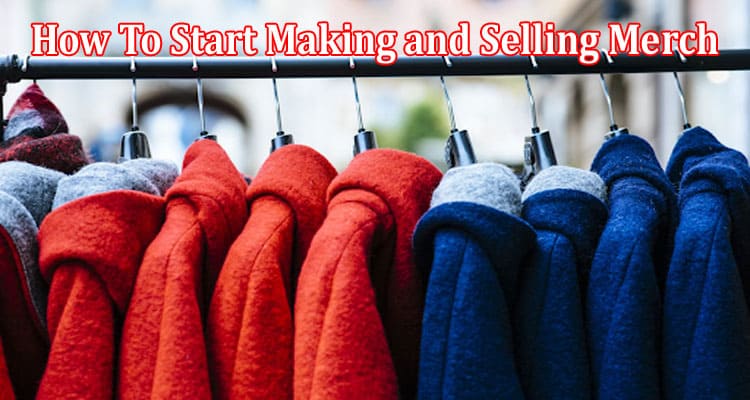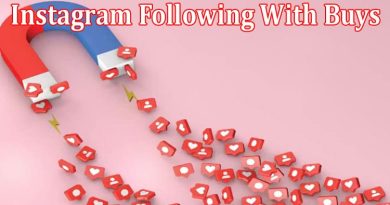How To Start Making and Selling Merch
As an industry defined by digital entrepreneurship and creative self-expression, merchandising has become an exciting avenue for brands and creators. Not only does it allow you to showcase your unique style and ideas, but it also opens doors to new income streams and a loyal fan base.
With the global e-commerce market forecast to reach a value of $6.3 trillion by the end of 2023, you know that big things are possible in the merch business. But how do you start?
In this article, we will take you on a comprehensive journey that demystifies the process of turning your ideas into tangible products. We’ll explore the key steps, from conceptualization and design to production, marketing, and sales. You’ll learn to choose the right products for your audience, design captivating artwork, find reliable suppliers, and establish an online presence for your merch.
No matter your background or experience level, this guide offers the knowledge you need to get on the right foot with your merchandising business.
Defining Your Brand and Audience
Creating successful merchandise begins with clearly understanding your brand and target audience. Your brand encompasses your identity, values, and the essence of your work. Consider what makes you or your content unique and how this can be translated into tangible products.
Ask yourself:
- What is the core message of my brand or content?
- Who is my target audience?
- What products are likely to resonate with them?
For instance, if you’re a musician, your brand could be defined by your genre and style of music. If you’re a content creator, your brand might be built around your distinctive content and personality. Understanding your audience’s demographics, interests, and preferences is vital in selecting the right merchandise.
Furthermore, it is crucial to create high-quality, eye-catching visuals that reflect your brand and connect with your audience. These include a professional logo, a typography that aligns with your personality, and a suitable color palette.
If you have inadequate design skills, consider hiring a professional graphic designer. Alternatively, you can use online design tools or platforms that offer templates for various merchandise products.
Selecting Merchandise Products
Choosing what to sell requires a thoughtful approach that balances your brand’s identity and your target audience’s preferences. To begin, reflect on your brand’s essence and the message you want to convey.
Consider what makes you or your content unique and how that uniqueness can be translated into tangible items. Your brand should be a compass, guiding you toward product selections that resonate with your identity and storytelling.
Understanding your audience is equally vital. Delve into their demographics, interests, and preferences. What products are they likely to use or display proudly?
Suppose you have a fanbase of tech enthusiasts. Given the popularity of mobile phone accessories, a global market that collected total sales of USD 254.8 billion in 2022, offering customized phone cases or tech accessories might be a natural fit.
If your audience leans toward fashion-conscious individuals, clothing and wearables could be your sweet spot, such as t-shirts, hoodies, tote bags, etc.
On top of matching your products with your audience’s preferences, consider production costs, market demand, and profitability. You may be tempted to throw this aspect in the backseat as a creative, but remember that selling merch is a business. A losing business will not help you, even in the name of creative expression.
Sourcing and Production
Finding reliable suppliers and ensuring the quality of your merchandise is crucial. Luckily, you have plenty of options nowadays, starting with print-on-demand services.
PODs handle everything, from printing to shipping, and all you need to do is upload your designs to their platforms. If you’re planning to sell t-shirts, these services are an excellent choice for beginners for two reasons: they require minimal upfront investment and account for a significant portion of the $7.21 billion global industry.
If you want more control over the production process, results, and turnaround time, local printers are usually your best bet. They can also be cost-effective for bulk orders, but be sure to vet your prospects for quality and reliability. Cheap doesn’t always mean good, especially when it comes to printing.
For large-scale production, you can go for overseas manufacturers, particularly in countries known for cost-effective production. This option requires more substantial upfront investment and careful quality control measures.
Whichever option you choose, prioritize quality, as customer satisfaction is paramount in building a loyal customer base. Request samples from your preferred supplier or printer and evaluate the product’s quality, ensuring it matches your design expectations.
Choosing E-Commerce Platforms
Establishing an online presence is the gateway to selling your merchandise. There are several options to consider, each with its advantages and considerations. You can create your own for complete control and customization. Platforms like Shopify, WooCommerce (for WordPress), and Wix allow you to shape your online store to reflect your brand’s unique identity.
Alternatively, you can leverage established marketplaces like Etsy, eBay, or Amazon to list and sell your merchandise. These platforms provide instant access to a vast customer base, helping you tap into existing traffic and benefit from their trust.
Social media, with its enormous user base, offers another avenue to showcase and sell your merchandise. Platforms like Instagram, Facebook, and Twitter can effectively display your products and even integrate e-commerce features, making the purchasing process seamless.
For those utilizing print-on-demand services, these platforms often come with built-in e-commerce features. This streamlines the selling process, as you can sell your merchandise directly through their systems, including product customization and order fulfillment.
No matter which platform you opt for, remember to optimize your product listings with high-quality images, detailed descriptions, and easy checkout processes.
Pricing Strategy
Pricing your merchandise effectively is a crucial aspect of merchandising, requiring a delicate equilibrium between several factors, including the following:
Costs
It’s essential to assess all costs associated with your products meticulously. This includes not only the production expenses but also shipping, packaging, and any platform fees. Your selling price must not only cover these costs but also allow room for a reasonable profit. This cost-based approach forms the foundation of your pricing strategy, ensuring your business remains financially viable.
Competitive analysis
Studying your rivals plays a pivotal role in determining the right price for your merchandise. Research what similar products are selling for in your niche. While it’s important to be competitive, be cautious not to undercut the perceived value of your merchandise. Striking a balance between offering a competitive price and conveying the quality and uniqueness of your items is key to attracting and retaining customers.
Perceived value
Understanding the perceived value your audience attaches to your products is another critical consideration. If your brand is synonymous with quality and exclusivity, it may justify a higher price point, as your customers recognize the additional value they receive through their association with your brand.
Discounts and sales
Planning occasional sales and discounts can be a strategic move. They not only help attract and retain customers but can also be used to manage inventory, especially if you have seasonal or time-sensitive merchandise. These promotions can generate buzz and excitement around your brand, drawing in both existing and new customers.
Shipping costs
You can either include shipping costs in the final price, offering the allure of free shipping to customers, or provide options for expedited or premium shipping at higher prices. This flexibility can cater to a wider range of customers and their preferences, making your merchandise more accessible and attractive.
Marketing Your Merchandise
To attract customers and drive sales, effective marketing is essential. Putting your merch out there on your website is not enough. You need to attract attention actively, maximizing all available channels with the right strategies, such as the following:
Social media marketing
Aside from being a place to showcase your merchandise, social media is great for engaging your audience through eye-catching visuals, engaging captions, and stories that narrate your brand’s unique journey. The aim is to generate interest, foster engagement, and turn casual scrollers into loyal customers. Through consistent and strategic posting, you can build a community with your brand and drive sales.
Email marketing
Another potent strategy for establishing a direct line of communication with your audience is email marketing. With an email list, it’s easy to send out newsletters, promotions, and updates to your subscribers.
This form of engagement nurtures leads, keeps your audience informed about your latest offerings, and encourages repeat purchases. It’s a personalized approach that enables you to cater to individual preferences and offer exclusive deals, creating a sense of belonging and loyalty among your subscribers.
Influencer collaborations
Collaborating with influencers can be game-changing, especially when targeting a specific niche. Working with influencers who share your brand’s values and appeal to your target audience can significantly amplify your reach and credibility.
Their endorsement lends authenticity and social proof to your merchandise, driving trust and, consequently, sales. This form of collaboration can take many forms, from sponsored posts to unboxing videos. The key is to ensure a genuine alignment between the influencer’s persona and your brand.
Content marketing
When you want to engage your audience with more meaningful content, content marketing can help you. Create blog posts, videos, or other content related to your merchandise and brand. Share the stories behind your products, offer tips and insights, and provide value to your audience.
In addition to building brand authority, this approach can enhance your search engine optimization, making it easier for potential customers to discover your offerings organically.
Paid advertising
There’s a whole world outside your existing audience, and paid advertising is one of the best ways to reach it. Platforms like Facebook, Instagram, and Google Ads offer extensive targeting options to reach a broader audience. The global advertising spending, expected to increase by 5.9 percent this year to $874.5 billion, makes ads enticing for promoting your merchandise.
Running paid ads can be especially effective when launching new products or running time-sensitive promotions. The key to success here is crafting compelling ad copy and visual media that appeal to your target demographic and spur them into action. Paid advertising can boost brand visibility and drive traffic to your online store.
Your Merch Endeavor Begins Here
Guided by the steps we’ve outlined in this article, you can convert your ideas into tangible products and establish a profitable venture. The key lies in understanding your brand and audience and striking a balance between the two. With the right products, effective marketing strategies, and a commitment to quality, your merchandising venture can quickly become a sustainable source of income and creative fulfillment.




